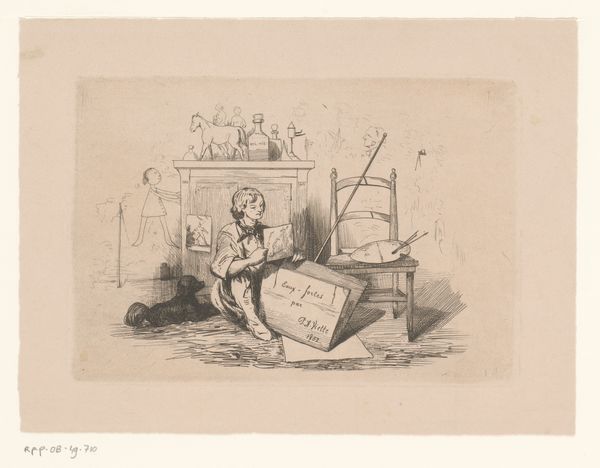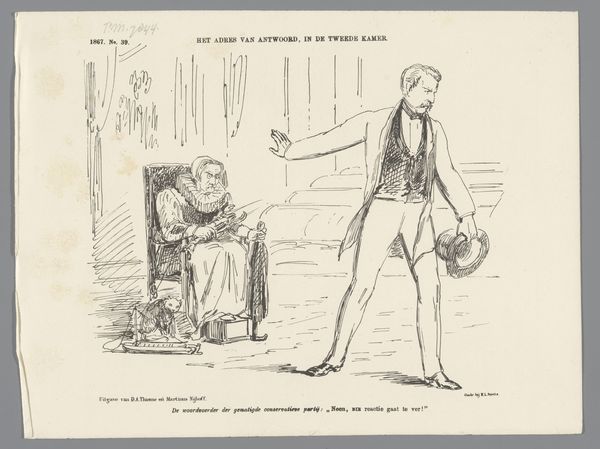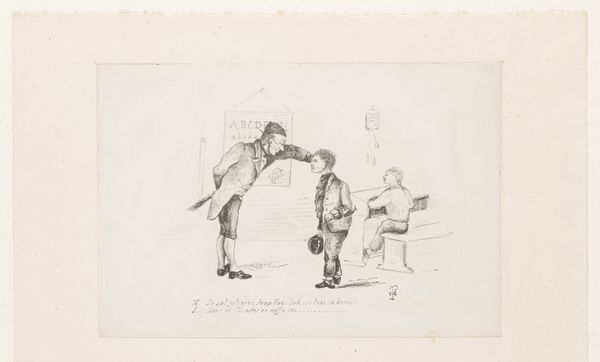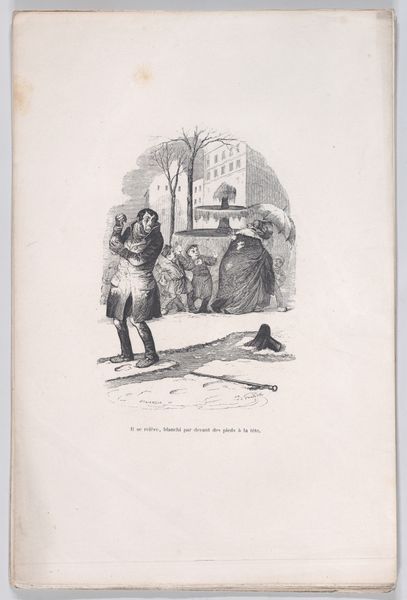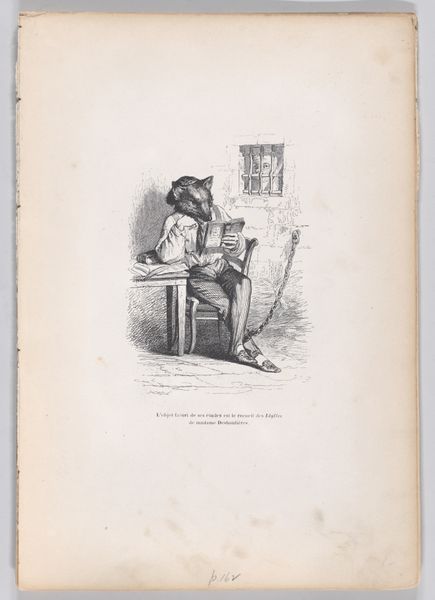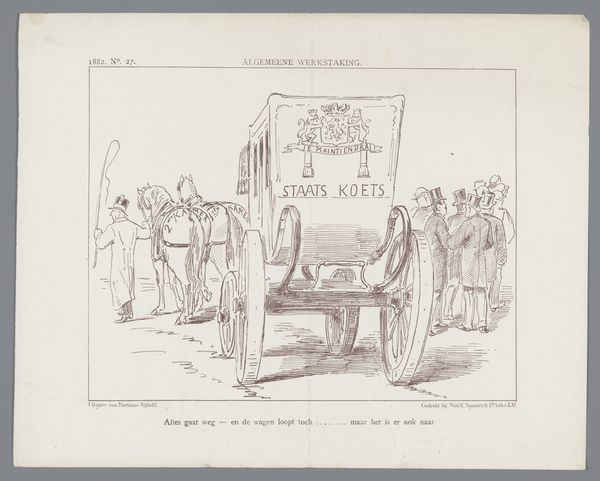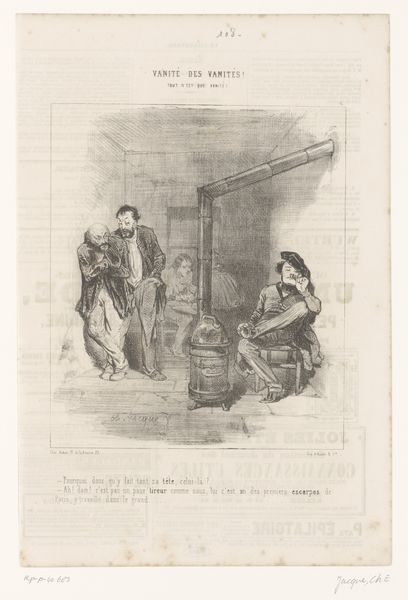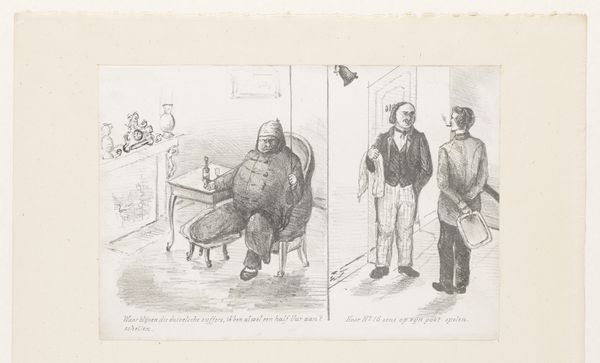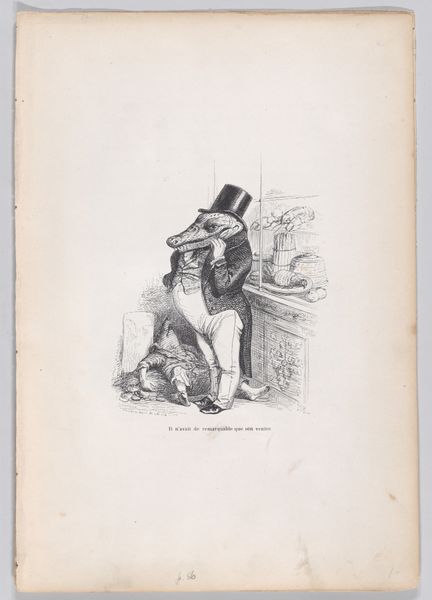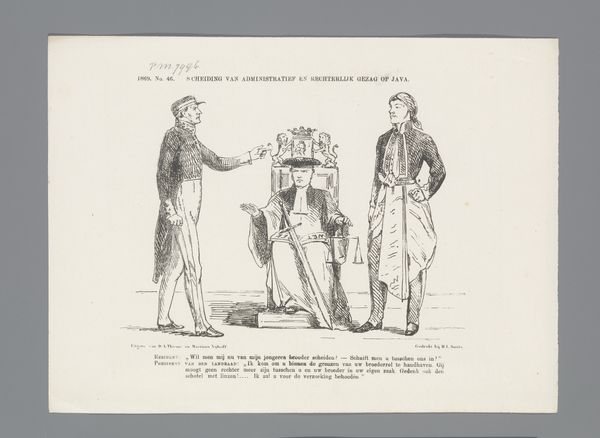
drawing, pencil
#
portrait
#
drawing
#
pencil sketch
#
character sketch
#
pencil
#
genre-painting
Dimensions: height 170 mm, width 255 mm
Copyright: Rijks Museum: Open Domain
Curator: The image before us, housed here at the Rijksmuseum, is entitled "Bediende bij boze gewonde man," or "Servant with angry wounded man" if translated. It is believed to be created between 1864 and 1902 by Jeremias Adriaan Adolf Schill using pencil on paper. Editor: Oh my, what a compelling scene, even in its sketched state! There's so much implied tension in this relatively small work. The servant's stance radiates anxiety and a desire to flee, and I'm particularly interested in his placement relative to the wounded man. What exactly has occurred? Curator: I'm drawn to that very question! We see the seated figure, presumably the 'boze gewonde man,' next to what looks like a bedside table adorned with an opened bottle and glass. There are suggested symbols of domesticity contrasted with a state of disarray and likely, physical injury given the work’s title. I wonder what we can read into this relationship with service and potential discord between individuals. Editor: Precisely! The objects almost speak to an overturned power dynamic, or maybe a disruption of the norm for that time. While domestic genre paintings were often used as propaganda to signal social codes, here the reading becomes complicated by what might have led to the seated gentleman’s state of agitation. Do we have other depictions of servants by this artist, I wonder, so that we might interpret what kind of social reading to pursue? Curator: Not that I’m immediately aware of, no. I'd hesitate to label it typical 'genre painting' precisely *because* of the palpable sense of interruption and ambiguous narrative that resist any concrete story. It makes the cultural reading so much richer in terms of the role of art and societal expectation. Editor: Right, the drawing offers instead a glimpse of unfulfilled promise of social balance, making one think not just of the social milieu when it was rendered, but perhaps of historical themes relating to the dynamics between social classes generally. Curator: That interruption, I suspect, lies at the heart of the drawing’s cultural force. It holds an unresolved drama— Editor: An image offering a quiet study on the fragility of social relations, it would seem. Curator: Agreed. And what more could one ask from a drawing than a question to turn over and over in one's mind?
Comments
No comments
Be the first to comment and join the conversation on the ultimate creative platform.



